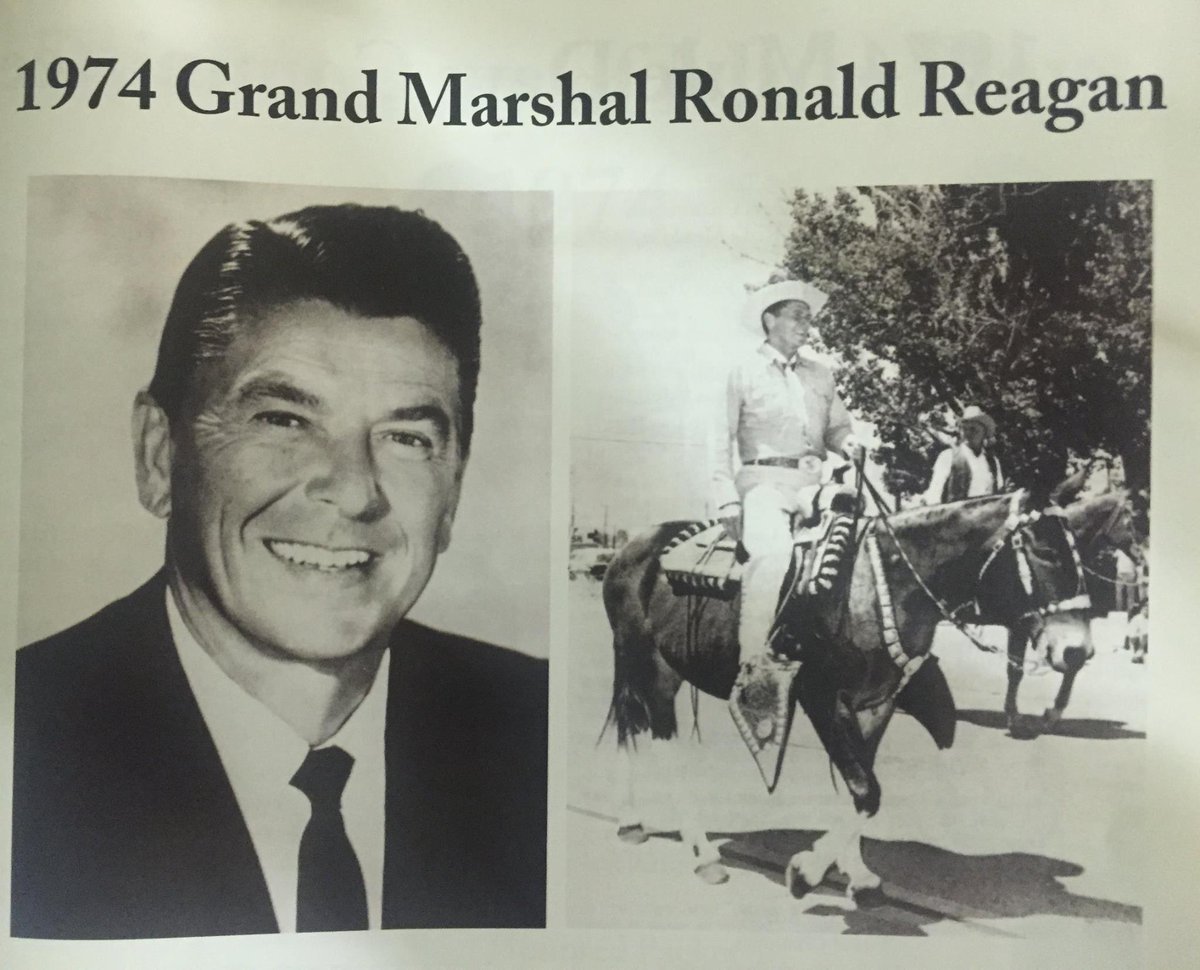A Chronicle of the Congressional Quest to name October 26, 1985, 'Mule Appreciation Day'
On January 22, 1985, Jim Cooper, the Representative for Tennessee's 4th congressional district (Democrat) introduced H.J.Res. 76 — 99th Congress (1985-1986) - A joint resolution to designate October 26, 1985, as Mule Appreciation Day. A joint resolution is often used in the same manner as a bill. If passed by both the House and Senate in identical form and signed by the President, it becomes a law. Joint resolutions are also used to propose amendments to the Constitution.
It may be that a mule is an animal with long funny ears that kicks up at anything it hears, but according to Representative Jim Cooper, Democrat of Tennessee, mules deserve bicentennial recognition and their own official day.
And Mr. Cooper made it clear why he feels that way.
In a letter to the other members of Congress, he said that by October ''the American mule will be 200 years old.''
''That's right,'' he went on. ''George Washington, father of our country, started the whole thing when he received two full-blooded jacks from King Charles III of Spain. The mules bred by George began a long tradition of service to our nation in both peacetime and war.''
Mr. Cooper asked his colleagues to back his resolution to make Oct. 26 ''Mule Appreciation Day.'' The Cooper letters were still fresh on Congresional desks when similar letters urging support for a mule day and mule bicentennial began arriving on Capitol Hill from the Lynchburg Mule Traders Association in Tennessee.
The following article appeared in the Feb. 16, 1985, New York Times written by Phil Gailey and Majjorie Hunter:
As previously reported in this space, Representative Jim Cooper, Democrat of Tennessee, is championing the cause of the mule on Capitol Hill. For weeks now, he has been seeking support for a resolution that would designate Oct. 26, 1985 ''Mule Appreciation Day.''
So far 127 House members have signed, but Mr. Cooper needs 218 co-sponsors to bring the matter to a vote on the House floor.
His effort on behalf of the mule, the hybrid offspring of a jackass and female horse, has not made life any easier for the aide he has designated to promote the resolution on Capitol Hill. The aide's name is Charles Monk, who prefers to be called by his nickname, Chip.
House members usually leave such matters as mule resolutions to their staffs, so one of Mr. Monk's duties is to try to convince other Congressional aides of the rightness of his boss's cause. When he calls other House offices and explains his business, a secretary usually rings the person he is calling and says with a giggle: ''Chip Monk is on the line to talk to you about mules.''
It gets their attention, so Mr. Monk said he does not mind. ''When I bring up the mule resolution the reaction ranges from laughter to an unemotional 'no,' '' he said.
In comparing mules' many advantages over horses, the Encylopedia Americana says: ''Because they are less nervous and will accept hard work, poor handling and abuse, mules are well suited to conditions of heavy work, poor food and shelter and inexperienced drivers.'' Reflecting on this, Mr. Monk said, ''I think there is a real kinship between mules and Congressional aides.''
This letter to the editor appeared in the March 1, 1985, New York Times
"To the Editor:
In Washington Talk (Feb. 16) you report on the continuing efforts of Representative Jim Cooper, Democrat of Tennessee, to have Oct. 26 designated ''Mule Appreciation Day.'' Now, ''127 House members have signed,'' but Representative Cooper ''needs 218 co-sponsors to bring the matter to a vote on the House floor.''
I can't even guess the cost in legislators' time and taxpayers' money of this effort to honor the mule. The next step, of course (if 218 co-sponsors are found), is for Congress to request President Reagan to issue a proclamation of the event - still more cost and demand on precious time.
The designation and recognition of such special events has been recorded, at no cost to the sponsors or the public, for the last 28 years in an annual reference book - Chase's Annual Events.
For Representative Cooper's reassurance it should be noted that his goal is already achieved. Mules will be appreciated and their day observed with or without an Act of Congress. ''Mule Day U.S.A.'' on Oct. 26 already exists and is duly recorded in the current edition of Chase's. It marks the bicentennial of the first importation of Spanish Jacks to the U.S., a gift from Charles III, King of Spain, 1759-88. Mules were first bred in this country from a pair delivered in Boston on Oct. 26, 1785.
An old-fashioned mule sale sponsored by the Lynchburg (Tenn.) Mule Traders Association will honor the bicentennial and acknowledge the mule's role.
WILLIAM D. CHASE, Editor, Chase's Annual Events Flint, Mich., Feb. 18, 1985”
The below page appeared in the April 1985 issue of Mules and More:
On July 24, 1985, H.J.Res. 76 did receive 220 cosponsors (163 Democrats, 57 Republicans) passing in the House by voice vote. On July 26, while in the Senate, it was sponsored by Albert Gore [Sen.-D-TN] with four cosponsors (James Sasser, [D-TN], Wendell Ford, [D-KY], Jeremiah Denton [R-AL], and Howell Heflin [D-AL]). It was read twice and referred to the Committee on Judiciary. (The United States Senate Committee on the Judiciary, informally known as the Senate Judiciary Committee, is a standing committee of U.S. senators whose role is to oversee the Department of Justice (DOJ), consider executive and judicial nominations, and review pending legislation). S.J. Res 39 was not passed by the Senate, as it did not receive a vote in the Senate. Its status is listed as “died in a previous Congress” in Congressional records.
Here is a timeline of H.J. Res. 76 / S.J. Res 39
January 22, 1985 - Introduced in House
January 22, 1985 - Referred to House Committee on Post Office and Civil Service
February 28, 1985 - Referred to Subcommittee on Census and Population
July 24, 1985 - House Committee on Post Office and Civil Service Discharged by Unanimous Consent
July 24, 1985 - Called up by House by Unanimous Consent
July 24, 1985- Passed House by Voice Vote
July 26, 1985- Received in the Senate and read twice and referred to the Committee on Judiciary
Extensive searching did not find where President Reagan issued a proclamation regarding ‘Mule Appreciation Day,’ despite numerous reports online that he did. You can search reaganlibrary.gov for all Presidentail speeches, executive orders, proclamations, etc.., made by President Reagan in office, and searching ‘mule’ yields less than 10 results: a video of Reagan being presented ‘The Sign of a Mule’ in Minnesota at a campaign rally in 1988; a speech where he says, “It's taken extraordinary hard work and cooperation, not to mention the tenacity of a mule, to maneuver these bills through Congress,“ in regards to the Food Security Act of 1985 and the Farm Credit Amendments Act of 1985; a transcription of a radio broadcast to the nation on May 7, 1983, on the Observance of Mother's Day where he quotes a book about a Kansas frontier women; two references to drug mules; a remark at a Senate Campaign fundraiser for Representative Ken Kramer in Denver, Colo., in September 8, 1986, where he says someone has “piled up enough money to burn a wet mule”; and in remarks froma a question-and-answer session with farmers in Norway, Iowa, on September 20, 1984, where he says something is “like hitting a mule with a club to get his attention.” I think it’s safe to say Reagan liked his mule similies and metaphors. But that makes sense, as he famously did commercials for the Borax 20 Mule Team detergent and was the Grand Marshal at the 1974 Bishop Mule Days.
Photo via @bishopmuledays on X
The gallery below shows a few pages from the December 1985 issue of Mules and More, which contained many articles covering ‘Mule Appreciation Day’ and the 200-year celebration of mules in America.
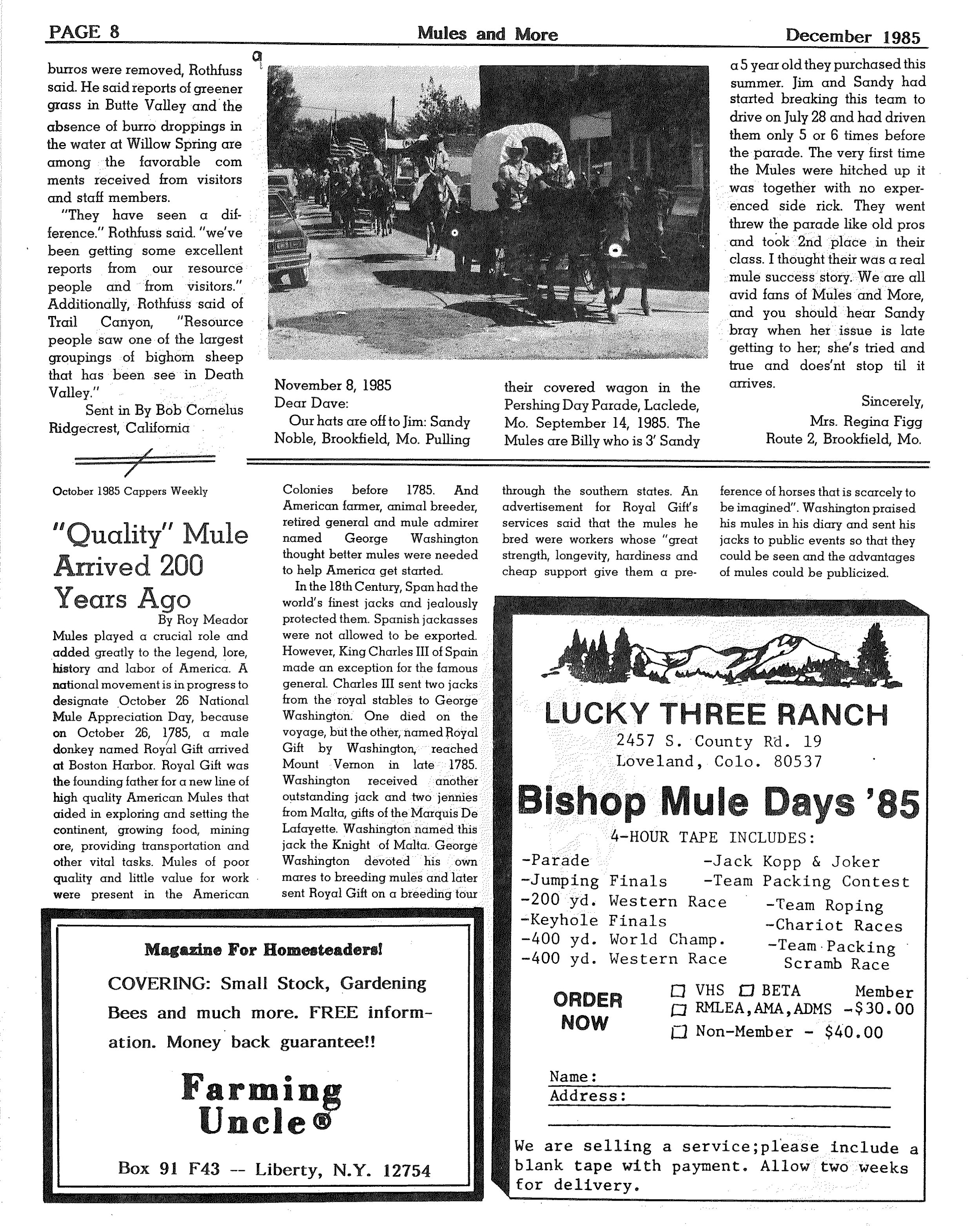
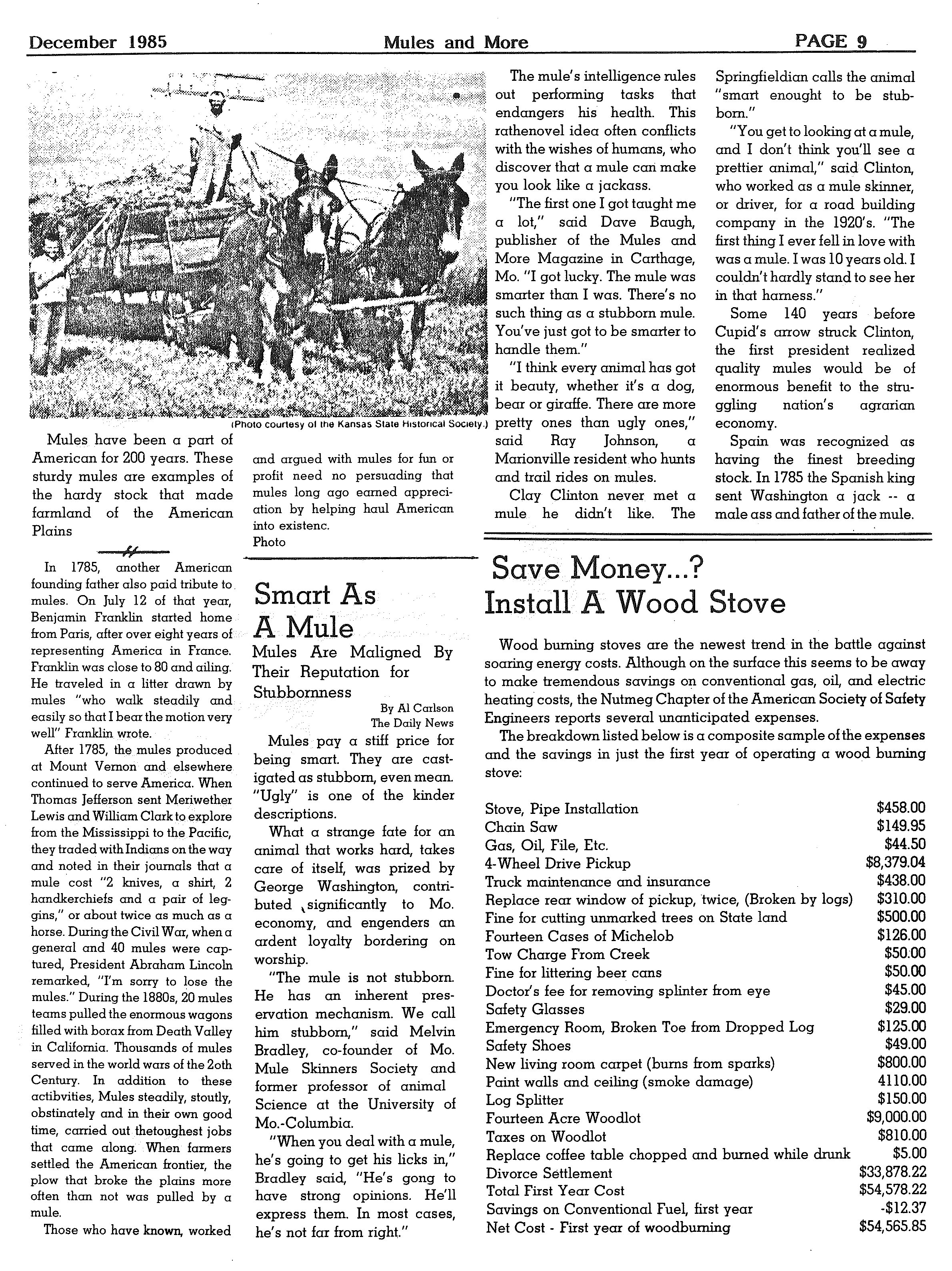
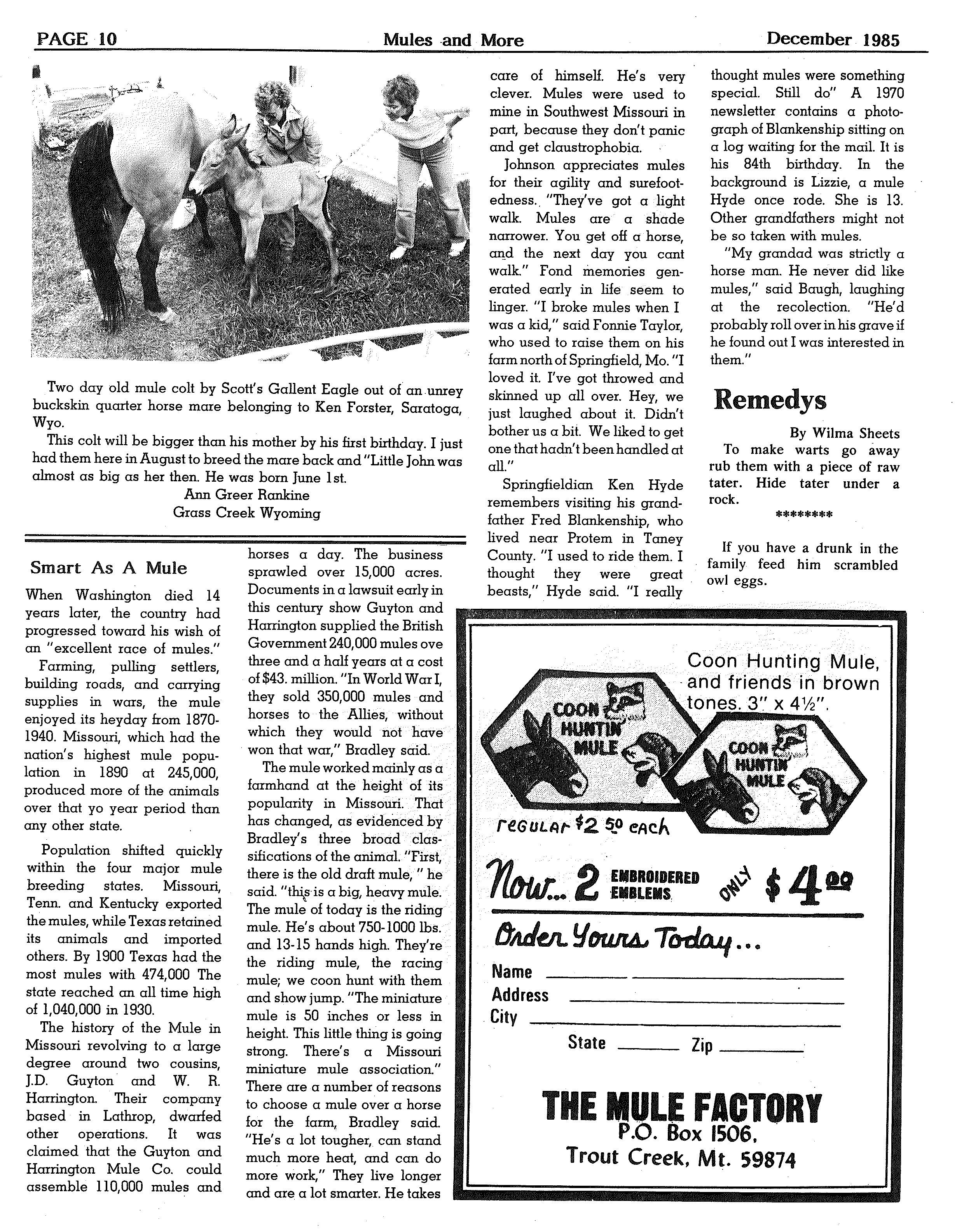
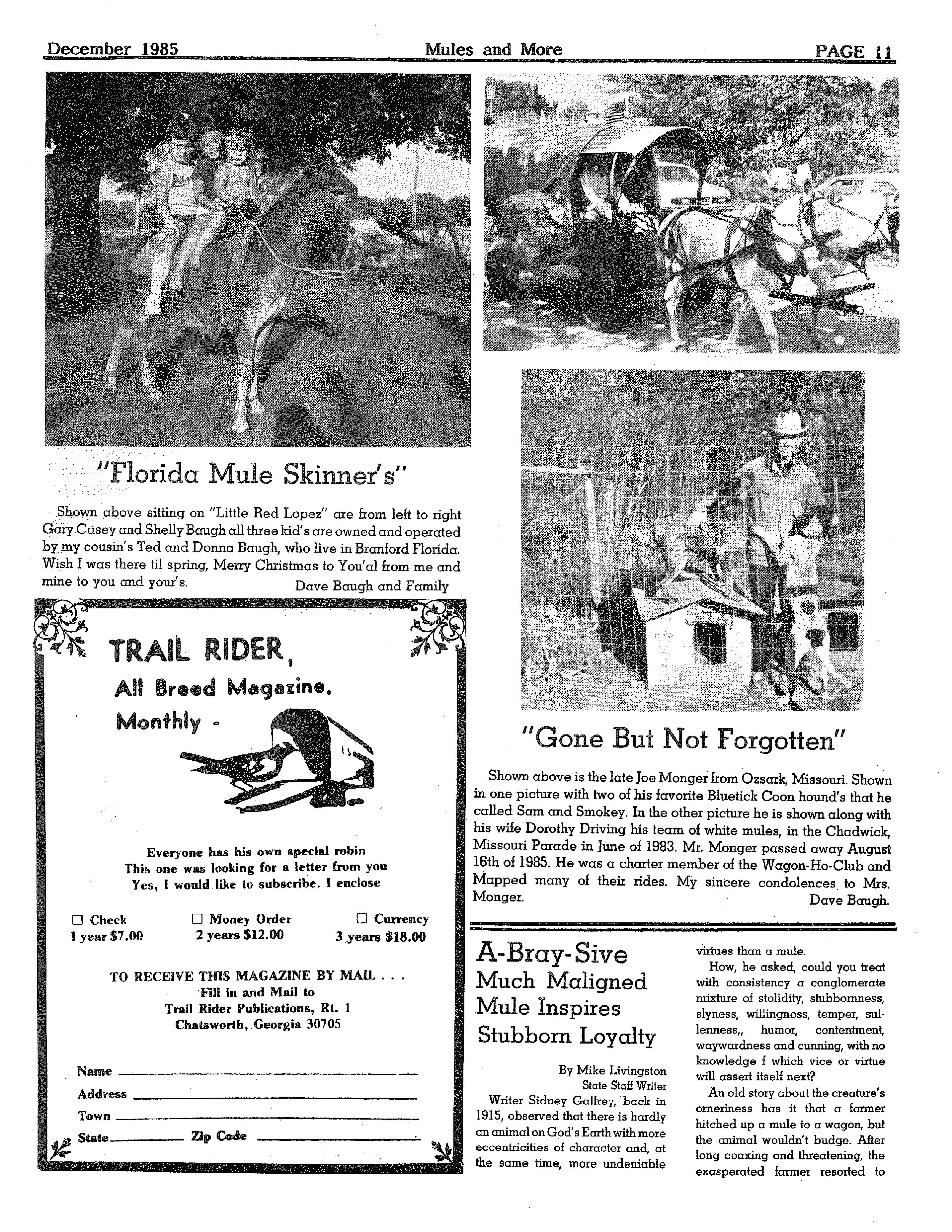
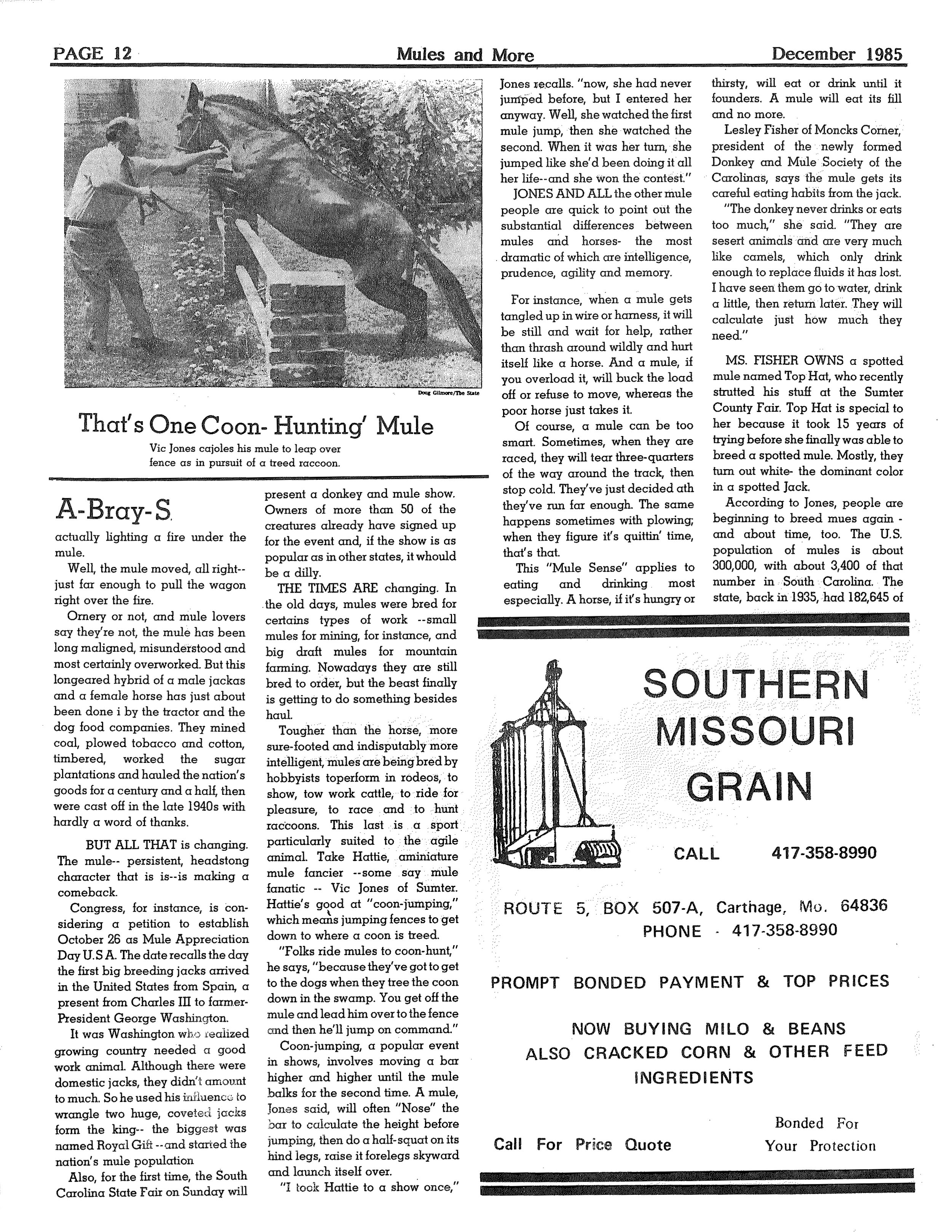
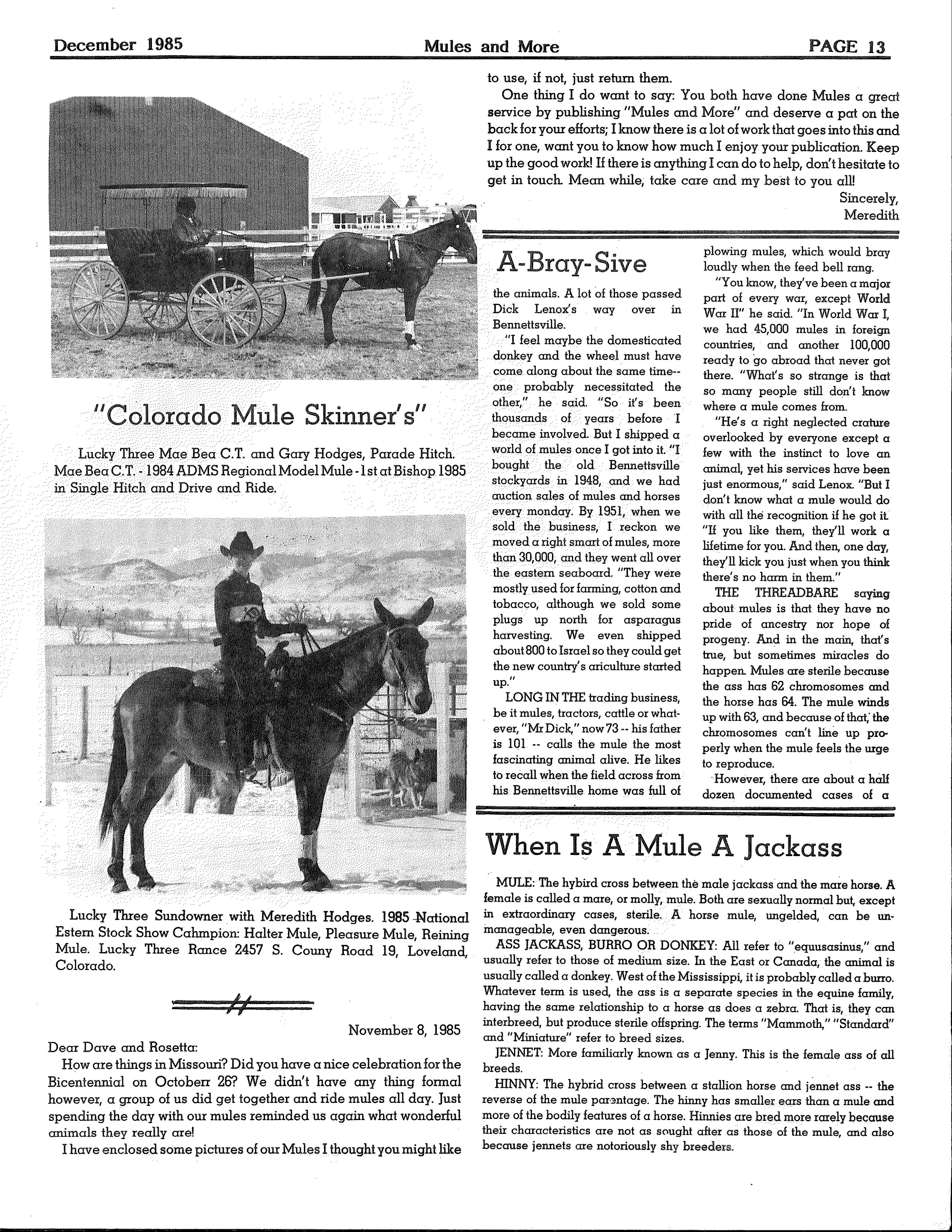
A copy of the below speech appeared in the October 1996 issue of Mules and More, but I couldn’t find it online to corroborate who gave it or what day. It was addressing the House of Representatives. It’s interesting to read, nonetheless.
Mr. Stump, Mr. Speaker, as we observe Mule Appreciation Day on October 26, 1985, and there is again some interest in the Army using pack mules, the following will be of interest to many.
Its author, Fred Burke, of Wickenburg, AZ, joined the Army in 1936 as an enlisted man in the Army's 11th Horse Cavalry in Presidio Monterey, CA. Upon his retirement some 20 years later at Fort Huachuca, AZ, he was retired with the last MOS of pack officer. During his career, Fred was the company commander of the 256th Quartermaster Pack Company, a part of the 10th Mountain Division and the last of our military to take mules into combat in Italy.
Fred Burke's analogy of the GI and the pack mule, originally written for the Stars and Stripes during World War I, follows:
“THE GI AND HIS PACK MULE - Now that the Army is talking about reviewing the use of Army pack mules, the close analogy between enlisted draftees and the conscription of pack mules should prove interesting reading.
Drafted GI's and mules both joined against their wills. Mules and GI's were both sent to training centers. The mules' centers were called Remount Stations.
They were both processed with physicals and haircuts. The mules' manes and tails were cut short.
Both received immunization shots and both received a serial number. Mules got what was called a Preston brand and it was burned on their necks. Although the GI didn't get physically burned, most carried a brand on their minds for the rest of their lives at the memory of this first training.
Both had service records filled out with serial numbers, home towns, date drafted, age and family if known. For mules, the families’ names might include a mare named Miss Cookie and the father a jack donkey named Sams Man.
Both were given uniforms at training camp. The mules received new shoes and halter. Both were given basic equipment to take recruit training with. The GI got a gun, back pack, canteen, etc. The mule got a pack saddle called a Phillips saddle, saddle pad, tarp, lash rope to tie on loads and a lead rope.
Now they were both ready to take basic training and were assigned to a training company. Both learned how to carry heavy loads over long forced marches, to bivouac in the field and live on reduced rations.
During this time, they were assigned living quarters. In the GI's case, it was called a barracks; with the mule, it was called a stable and corral. GI's had mess call three times a day; the mules only twice. The mules got grain and hay; the GI's got food that tasted about the same. When it came to cleaning their respective quarters, the mules had the best of it. The GI's had to make their own beds and scrub the barracks. The mules were fortunate to have a detail of enlisted men who cleaned the stable for them.
During recruit training, both would get blisters, sore muscles and sores from equipment rubbing on formerly unused spots. They got colds from field training trips. Both mules and GI's would report in the morning to be placed on the sick call book and reported to the medical facilities.
In the mule's case, his doctor was called a veterinarian. Both received treatment and a notation as to light duty, full duty or confinement to quarters with a report back date. The sick book was a permanent record for both. They were both accused of malingering to get out of work. In the mule's case, he learned that if he went on sick call, he got to loaf in the corral and didn't have to take a long march with a pack.
After recruit training, GI's and muleswere assigned to a replacement depot for future assignment to their permanent companies. Their service record went right along with both and the serial number was their identification.
Upon arriving at their new company, both were assigned to a platoon. The mule was given a number from 1 to 50 - almost the same number as in a GI's platoon. The mule's number was put on his halter and his saddle. He also got a GI haircut on his tail that told his platoon number. A one bell cut was the 1st platoon, a two bell cut was the 2nd platoon, the three bell cut was the 3rd platoon and no bells was the 4th platoon.
By now both were full-fledged, fully trained healthy individuals ready to join their comrades in defense of their country, willingly or not. From here on both were career military and hopefully would volunteer for an Army career.
The parallel continued in love, duty, living conditions and retirement. An exception was leave time - the mules got no leave. And a GI could retire at 20 years with half pay. The mules were sold as surplus and sent to farms.
In love matters, the GI had the PX girls, the USO or Canteen girls. And of course, there was always the girl next door who he would someday marry and reproduce more GI's. The mules only had the platoon "bell mare" for love. Each platoon had one and she was like a queen bee. All the mules in the platoon loved her with a fanatic passion and would follow her to death and did on several occasions.
The mule sometimes fell in love with the local camp followers who would stray close enough to camp for him to pick up her scent. The mule would even go AWOL just like the GI to spend some extra time with a sweet young thing.
Unfortunately for the mule, he was different from the GI when the subject of reproduction came up. The mule cannot reproduce but he enjoyed the pleasure of trying.
In WWIl at Camp Swift, Texas, a large number of mules went AWOL and were seen enjoying the pleasures of free love among the horses in the river bottom near Bastrop, Texas. This was just prior to their going overseas with their GI counterparts to fight in the 10th Mountain Division in Italy.
In death both mules and GI's were together at times. Sadly, at times both were killed in either a minefield or by enemy artillery fire. In this case, they both had the same notation in their service records...KIA.”
It's pretty much always 'Mule Appreciation Day' here at Mules and More, but October 26 seems like a great day to celebrate them anyway! Mules played a vital role in building America, from the early days of westward expansion to the construction of major infrastructure projects. They were essential for transportation, agriculture, mining, and other industries. Mules were truly essential partners in the building of America.
We love their versatility, their sure-footedness, their hardiness, their intelligence, and most of all, their long ears. We hope you take a moment to give your mule an extra treat (or butt scratch!) today.


